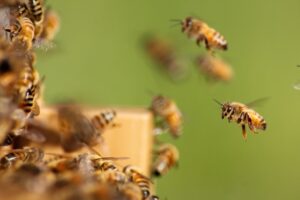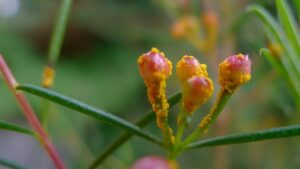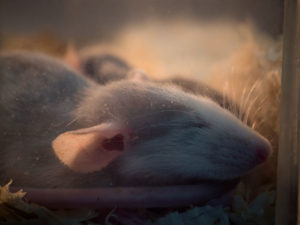Enter your address to receive notifications about new posts to your email.
Articles by Grace Niewijk (8 results)
-
Diet affects genetic crossover frequency in mice
Meiotic recombination in a commonly used laboratory mouse strain showed sensitivity to dietary changes. Recombination within the germline is a tightly controlled process. But new research suggests that nutrition may introduce some variability into this crucial step in genetic transmission, which could have implications for the design of future genetics studies. A study published in…
-
Ctenophore genome assembly combed for evolutionary clues
Scientists generated a karyotype, chromosome-scale genome assembly, and manual genome annotation for a common ctenophore. Ctenophores—beautiful marine invertebrates also known as “comb jellies”—have long fascinated and perplexed biologists. Phylogeneticists believe that either ctenophores or sponges were the first organisms to branch off from the tree of life, making them the “sister clade” to all other…
-
Honey bee social behaviors and the long hunt for genetic factors
Researchers used a forward genetic approach to identify genes that affect a social behavior in honey bees. For more than 30 years, honey bee geneticist Robert E. Page, Jr. and his colleagues have sought the genes that influence a colony trait that only emerges from interactions between thousands of individual bees — a social phenotype.…
-
Mapping complex traits in hemp
Researchers identified dozens of quantitative trait loci controlling important traits in Cannabis sativa. In 2014, United States federal law changed to allow scientific research on Cannabis sativa in states with regulated hemp programs. This legal shift opened the door to research that had previously been slow and difficult due to regulatory hurdles and funding challenges. A new study published…
-
NUKUs: A new primate retrocopy family with distinct functionality
Multiple divergent retrocopies of the well-characterized Ku70 gene were identified in humans and other primates. The last 63 million years of primate evolution have been strongly shaped by genetic retrotransposition; thousands of genes and proteins with new functions have evolved from retrocopies scattered throughout the genome. These retrocopies arise when retrotransposons reverse transcribe a cellular…
-
The myrtle rust genome is the largest assembled fungal genome to date
Over 90 percent of the genome of this pathogen threatening Australian ecosystems is made of transposable elements. Myrtle rust (Austropuccinia psidii) is a pathogenic fungus that has spread rapidly across the globe with devastating effects on local vegetation, including agricultural crops. It is extremely versatile, with over 480 known host species in the widespread myrtle…
-
Yeast regain long-lost traits
Yeast circumvent Dollo’s Law and reacquire traits lost tens of millions of years ago from distant relatives. Dollo’s Law, first proposed in the 19th century, holds that evolutionary losses are irreversible — if a species discards a complex trait, it will never reacquire exactly that trait. However, a study published in Genetics highlighted one way that unicellular fungi can…
-
Sleep control gene conserved across millions of years of evolution
AP-2 transcription factors, which control sleep in flies and worms, are confirmed to do the same in mammals.








